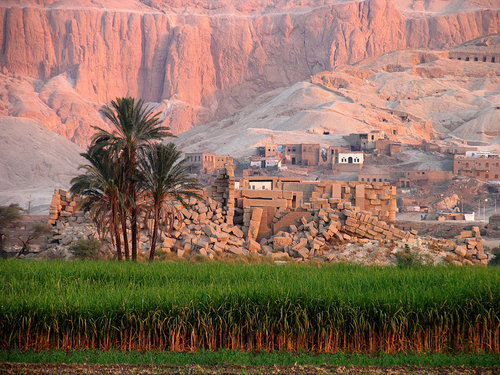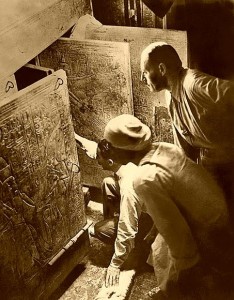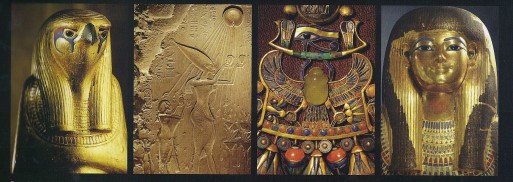The Valley of the Kings, Egypt – Archeologists are saying that their newest exploration project will be “the most extensive exploration in the Valley of the Kings since Howard Carter’s time.” It was the discovery of King Tut’s tomb in 1922 that captured the world’s attention – and imagination – surrounding ancient Egyptian death rituals. Now, they’re hoping to uncover missing “queens of the late Eighteenth Dynasty,” as well as “some pharaohs of the New Kingdom, such as Ramesses VIII.”
SevenPonds also did some exploration on the subject of Egyptian funeral traditions, finding that, contrary to popular belief, it wasn’t every citizen’s fate to be enterred in tombs of Giza style proportions. Most Egyptians, reveals SevenPonds’ Dana Sitar, “were simply buried in the desert, naturally preserved by dehydration. Graves were small pits dug in the sand, stocked with jars of food and drink as well as slate palettes etched with religious spells.”
“…it will be “the most extensive exploration in the Valley of the Kings since Howard Carter’s time” say archeologists.”
The importance of objects in Egyptian burials pervaded every level of the ancient social hierarchy. Select belongings would help loved ones make their journey to the next world, providing comfort and sustenance into an unknown landscape. Afterlife offerings were usually as simple as food and drink, or clothing – whatever a family could afford to part with. It was only on royal occasions, such as that of King Tut, that Egyptians rallied to construct large tombs and pyramids. In such cases, burial grounds were constructed with the complexity of a labyrinth, with traps and hidden chambers guarding the gilded furnishings and other extravagances of Egyptian kings.
Underground radar technology helped archeologists like Afifi Ghonim, the field director of the project, deepen the academic community’s understanding of Egyptian burial traditions, as well as the dynamic role the Valley of the Kings played in everyday Egyptian life. Ghonim was surprised to learn that one of their discovered tombs (the resting place of a singer named Nehmes Bastet) was actually a kind of up-cycled burial. It was clear, says Ghonim, that the grounds were originally constructed for someone else.
Ghonim’s team also discovered a complex flood control system, which suggested that ancient Egyptians had no problem letting the spiritual and the practical occupy the same space; on the contrary, the idea makes sense: why not build your flood protection system around the most precious part of your city?
The data Ghonim and his team have uncovered will take decades to process. But the manifold discoveries surrounding the tombs of ancient Egypt will be worth the wait for Egypt both culturally and economically. Tourists flock to the Valley of the Kings – thus, a new addition to the collection of royal tombs could boost an economy that has been on a downward spiral since the 2011 revolution. “This,” says Egyptologist Zahi Hawass, “could be another era for archaeology.”
Related:
- SevenPonds’ article on ancient Egyptian burial customs.
- SevenPonds’ article on the “art of grieving” in ancient Egypt
- SevenPonds’ article on afterlife beliefs in Africa.

 New Egyptian Tombs in Valley of the Kings?
New Egyptian Tombs in Valley of the Kings?






 First the Wealth Gap, Now the U.S. Has a Growing Health Gap
First the Wealth Gap, Now the U.S. Has a Growing Health Gap
 How to Comfort A Dying Loved One
How to Comfort A Dying Loved One
 Our Annual Seven Holiday Gifts for Someone Who Is Grieving, 2024 Edition
Our Annual Seven Holiday Gifts for Someone Who Is Grieving, 2024 Edition














